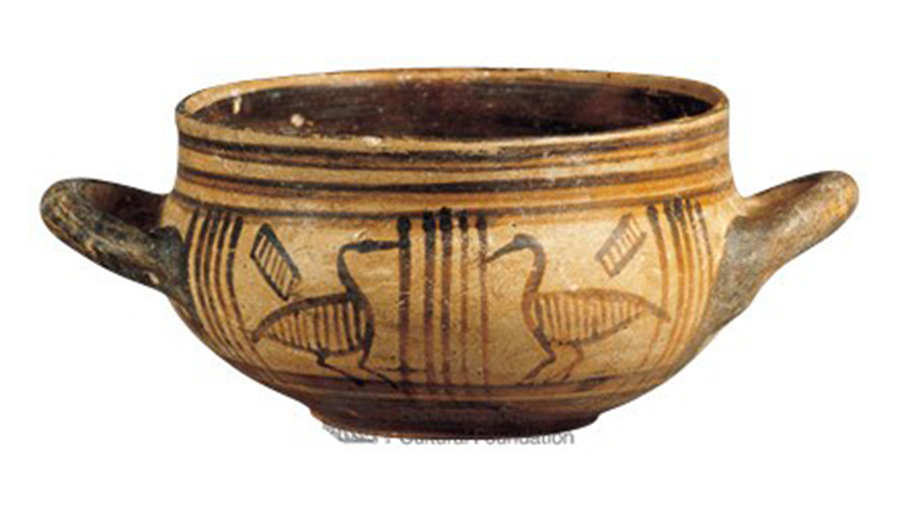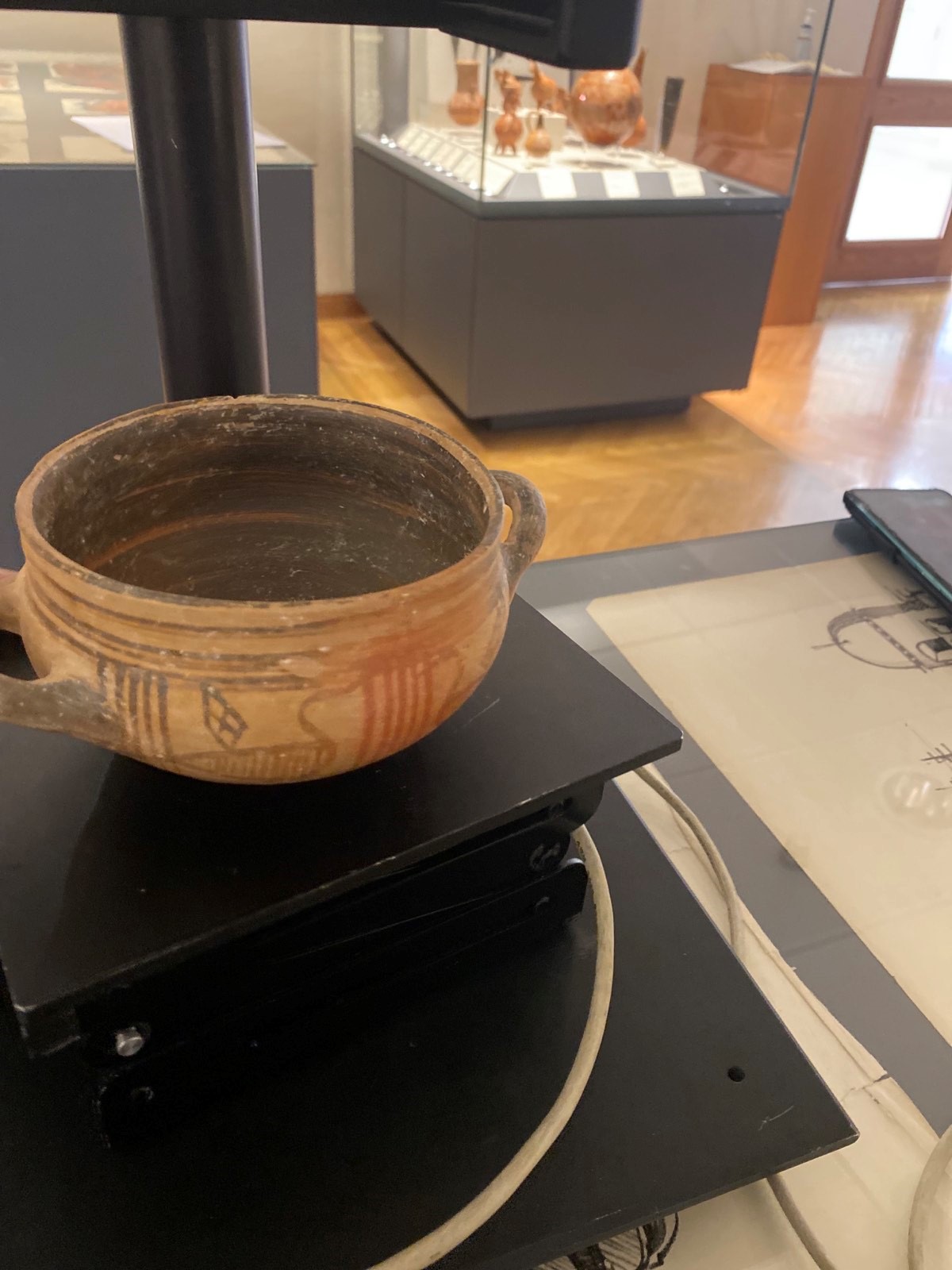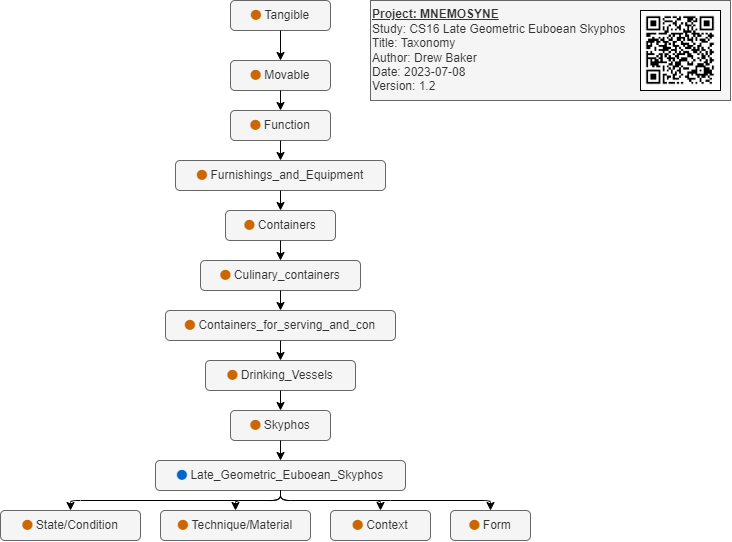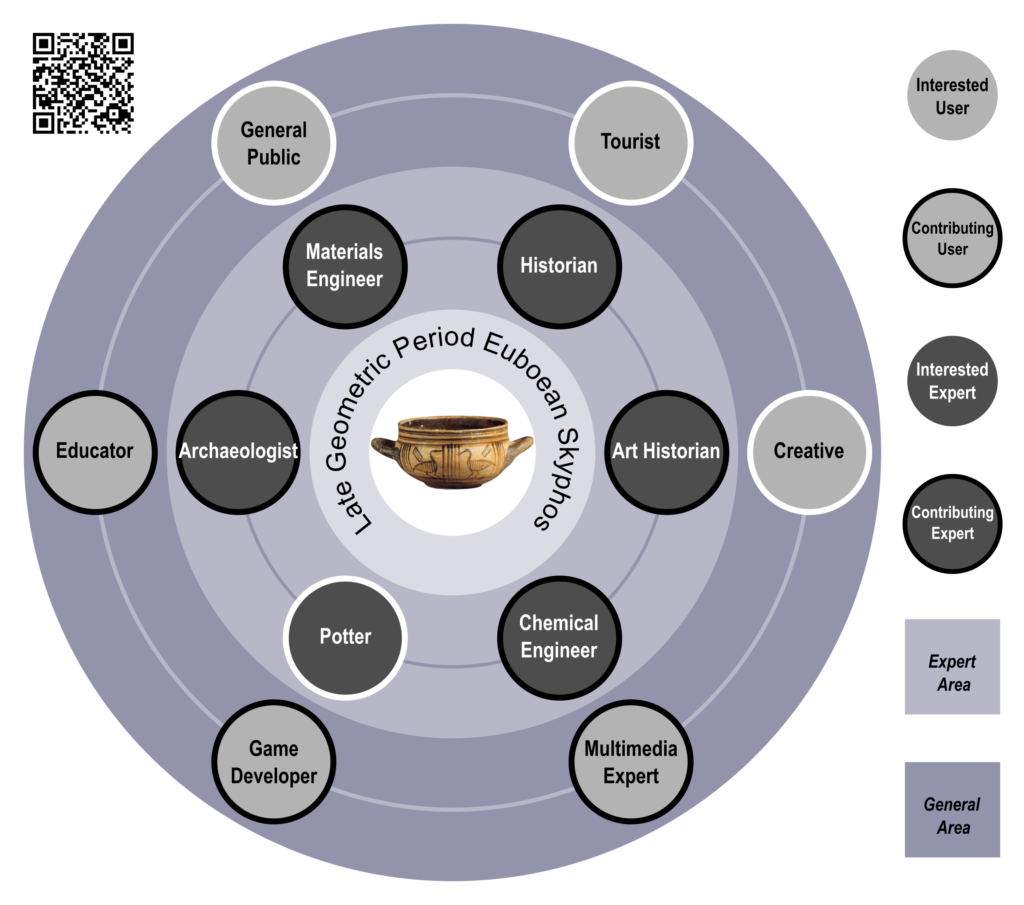1. Introduction
The skyphos, dating back to the end of the 8th century BC, is of characteristic Late Geometric Euboean type. Such skyphoi have been found in fairly large numbers, especially in tombs in the Amathus region. The Cypriots were very fond of the Euboean drinking cups, especially during the Cypro-Archaic I period, and they also produced them locally. The skyphos belongs to the pottery collection of the George and Nefeli Giabra Pierides Museum at the Bank of Cyprus Cultural Foundation. The artefact under study (height: 7cm; diameter: 11.8 cm) has convex sides, a vertical lip, two opposite horizontal loop handles on the body, flat base. Decoration in orange to dark red paint. The exterior surface is decorated on both sides between handles with two confronted birds in rectangular panels separated by a group of vertical parallel lines. Above each bird, there is a rectangle or lozenge probably recalling the wings of Euboean birds. The interior is painted solid.
MNEMOSYNE research group has focused on the digital reconstruction of the late geometric Euboean Skyphos using photogrammetry. Additive manufacturing (3D printing) has been employed for the replication of the 3D model. ERA Chair team members have done the research and documentation of the related literature to record the conceptual model of data, aiming at the holistic documentation of the Skyphos. The taxonomy diagrams have been gathered and the types of data needed for the record of the cultural heritage objects into classification categories. Noninvasive chemical analytical techniques (eg. X-ray fluorescence spectroscopy, FTIR spectroscopy and Raman spectroscopy) could be employed for the identification of the dark orange-red colour used for the decoration of the Skyphos. Other traces of colour not visible to the naked eye could also be detected. Such identification of original pigments and comparison with related, published, scientific data may provide information for art-historical and archaeological studies on aspects such as material and symbolic status of such artefacts manufacturing techniques and workshops secrets, diachronic development of style and technology.
Director of the Bank of Cyprus Culture Foundation, and Curator of the Museum, contributed to the collection of all relevant information and historical and other data. Additionally, in association with the University of West Attica, the non-invasive technologies of X-ray fluorescence spectroscopy and X-ray Raman spectroscopy, which enable the identification of traces of colours in the objects under study, were used to study the chemical composition of the objects. The object was digitized using photogrammetry, and various measurements were made to determine the object’s material and colours.
3. Estimation of Complexity & Quality
The following radial charts are base on the based on the EU 3D Study/VIGIE 2020/654
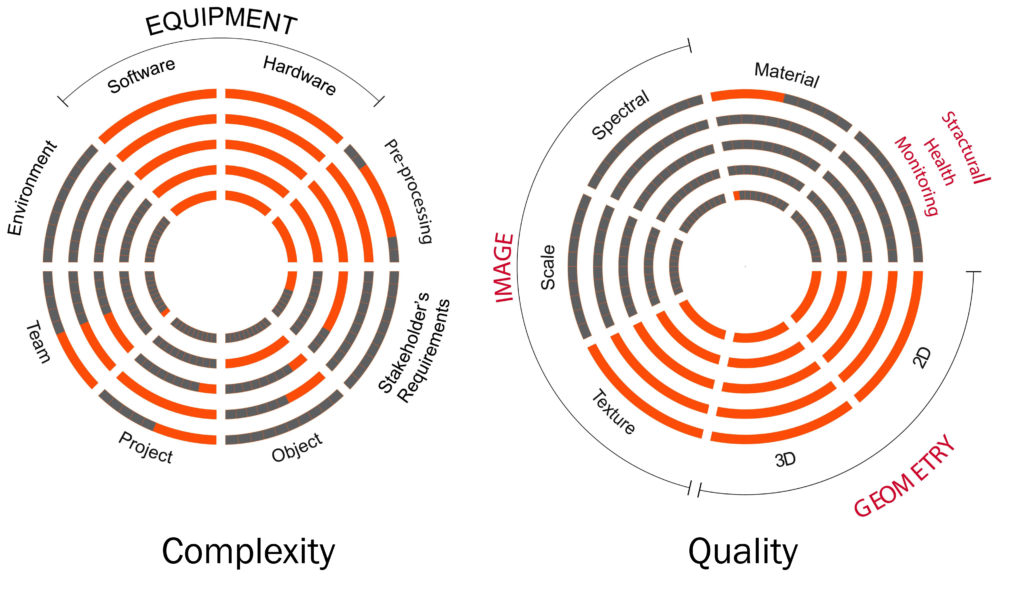
4. Taxonomy
This is a top-level view, clicking on the image will open up the full taxonomy in a new window
6 Research Outputs
Data Acquisition
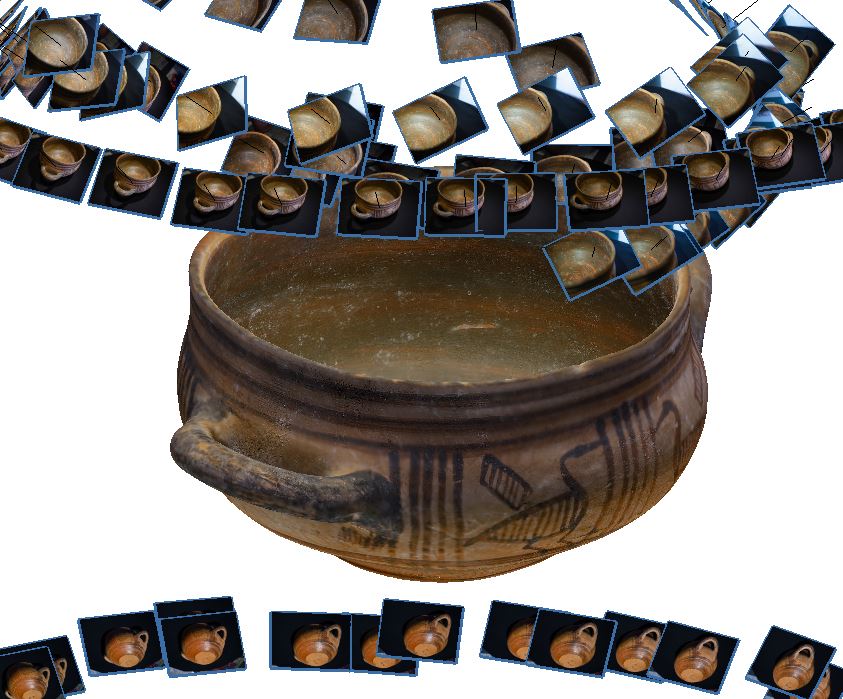
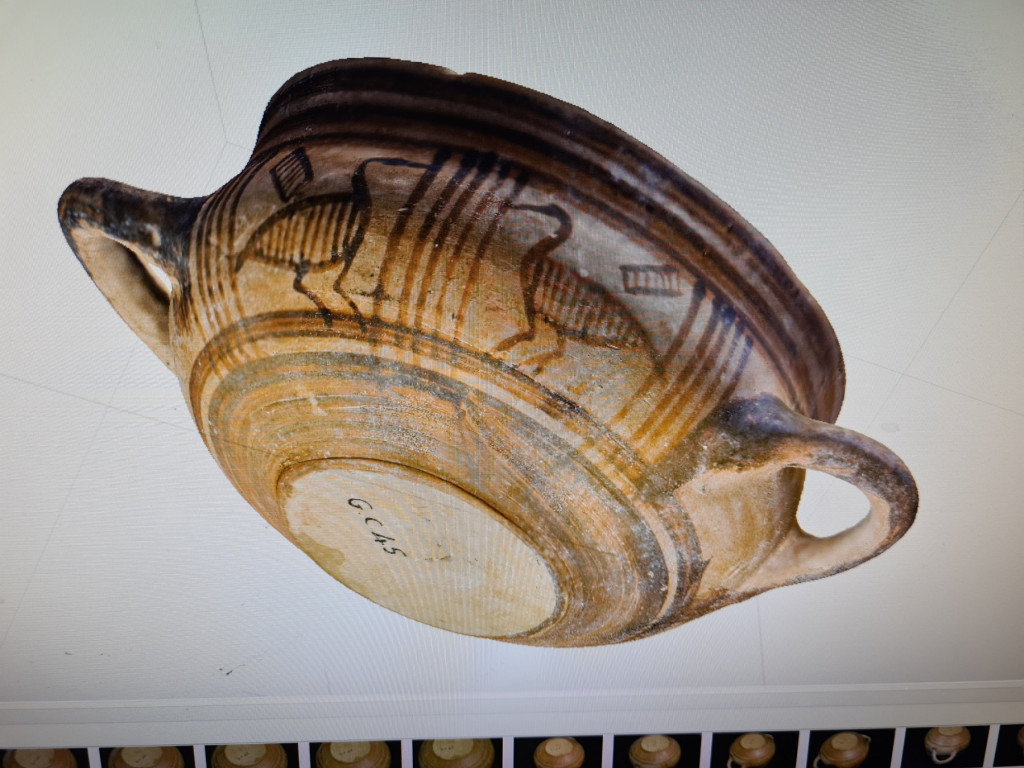
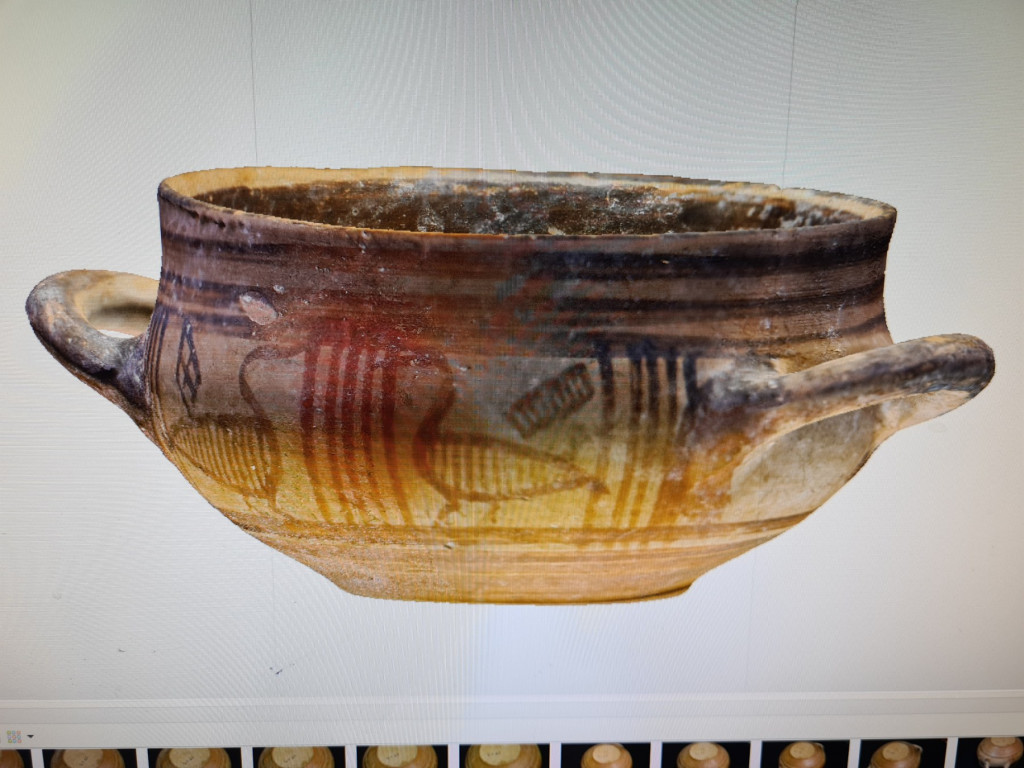
3D Reconstruction – Modelling

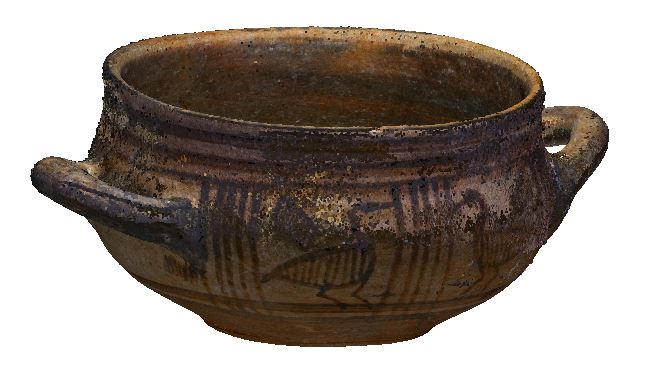
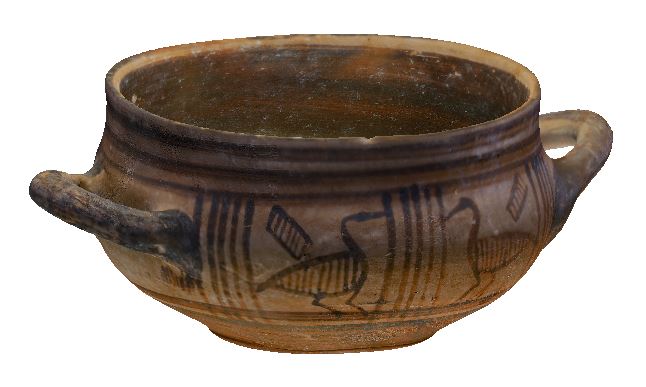



Video of the 3D reconstructed of the artefact
3D Fabrication
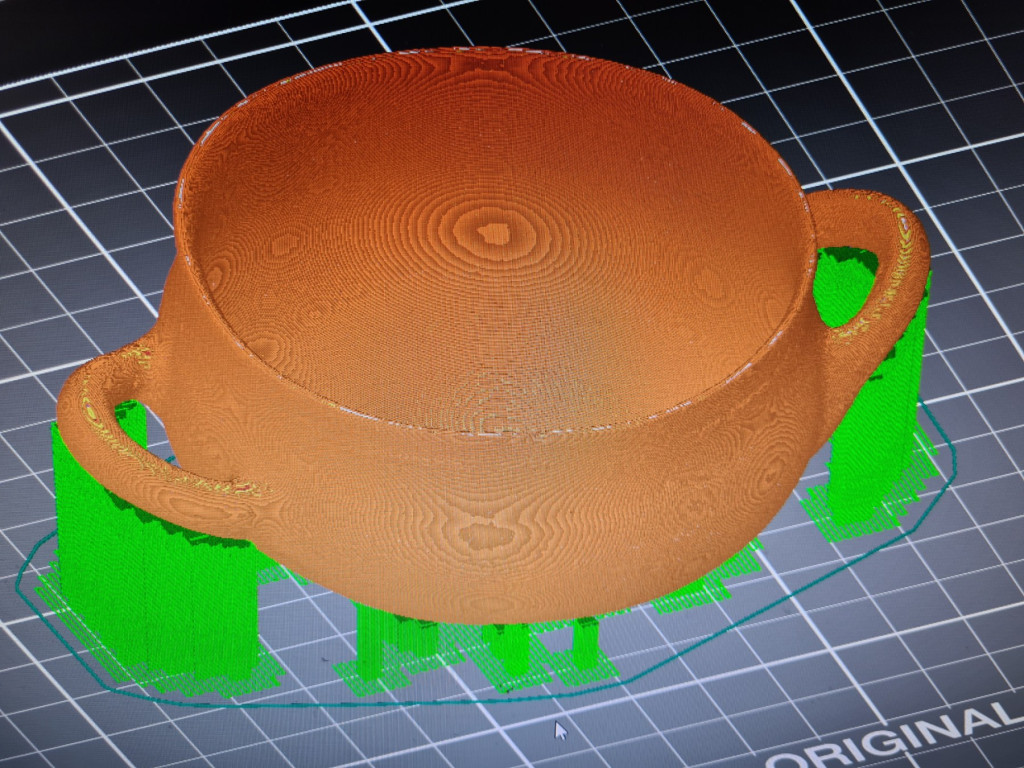
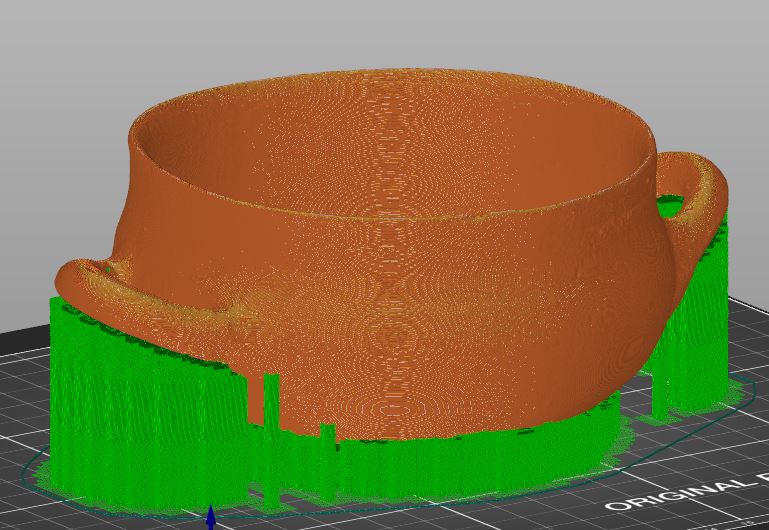
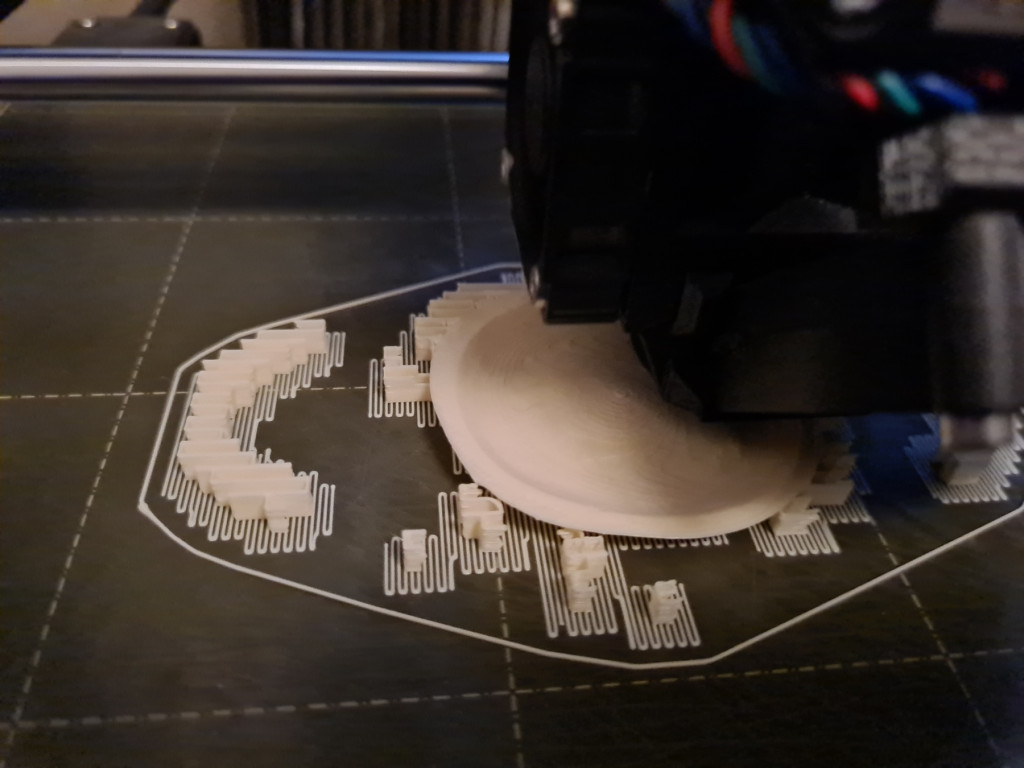
Spectroscopy measurements (Colours detected: Red, Blue Black, Yellow and Brown)
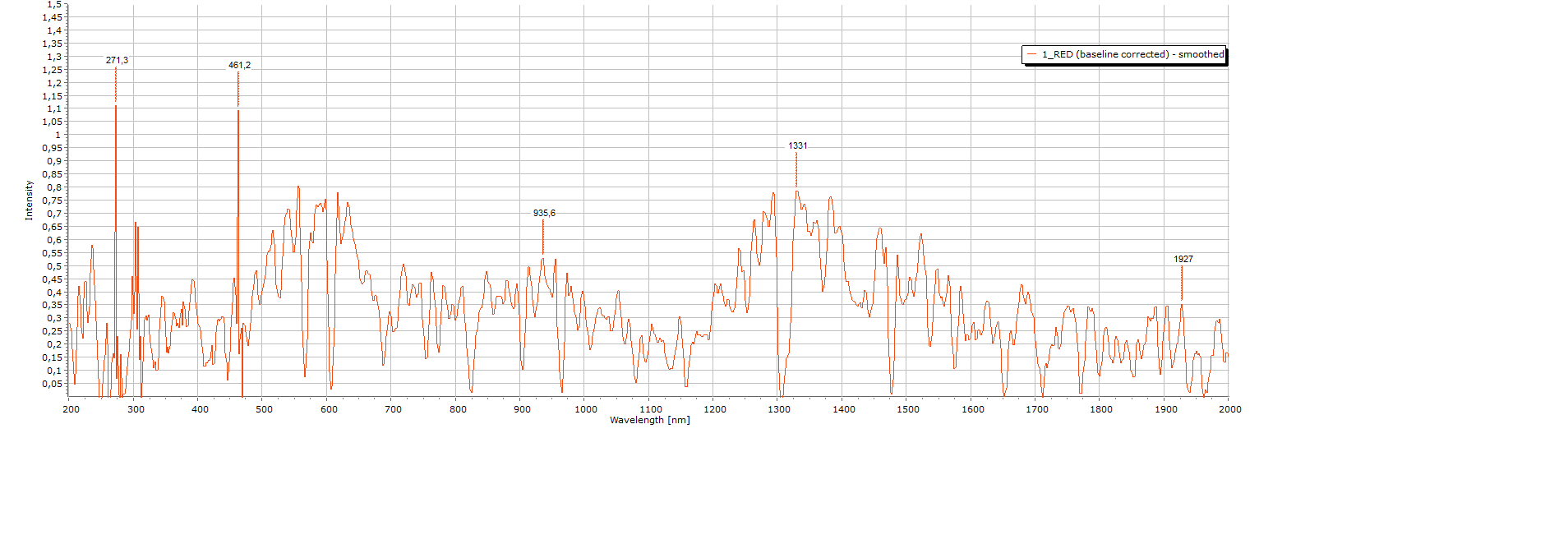
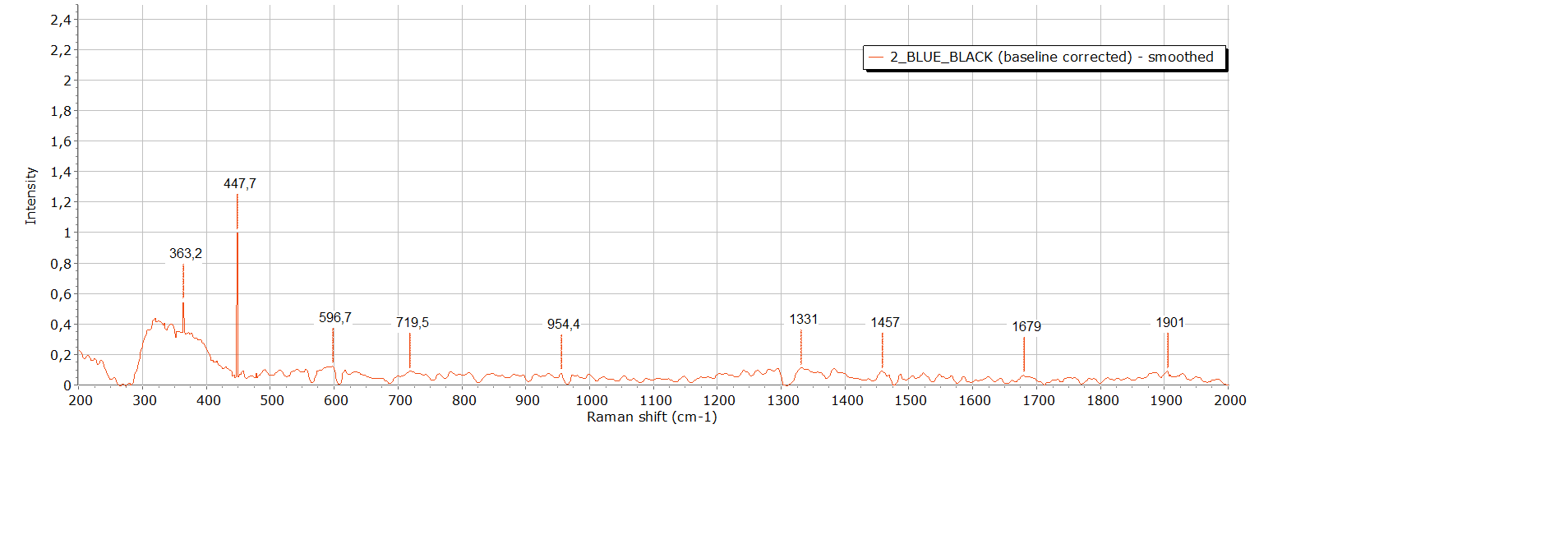
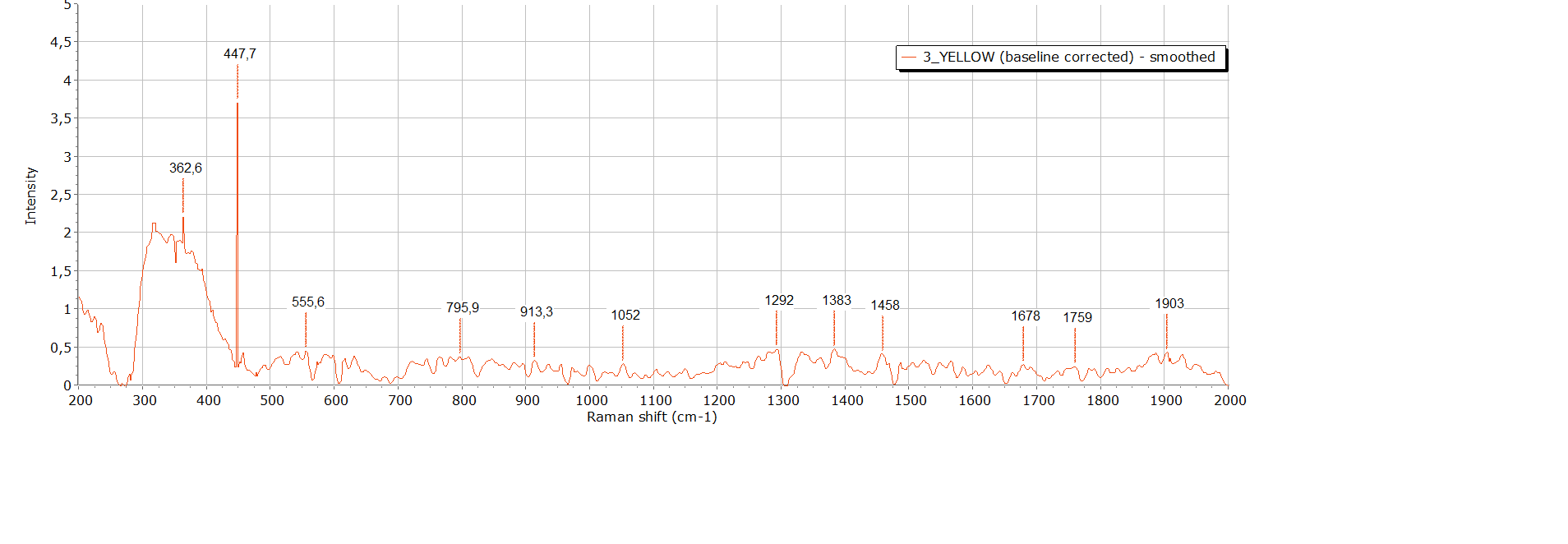

Accessibility and Reuse
This case study has been submitted to the local aggregator (APSIDA) and successfully harvested into the Europeana platform under CC BY-NC-SA 4.0 license.
7. Bibliography
- Karageorghis, Vassos., & Boardman, J. (2002). Ancient art from Cyprus: in the collection of George and Nefeli Giabra Pierides. Kapon Editions.

